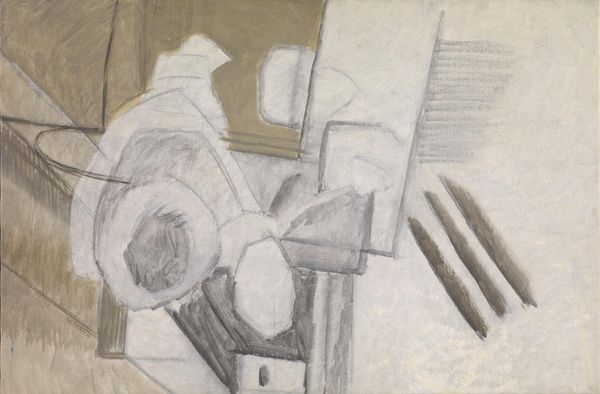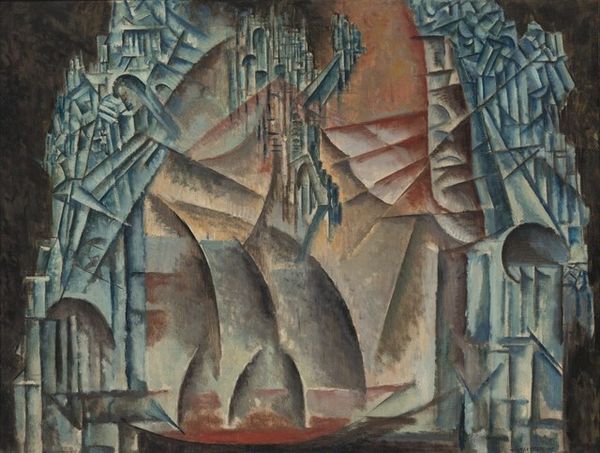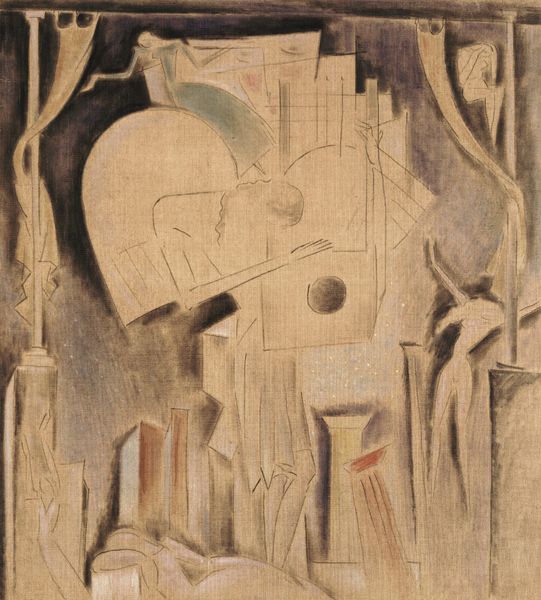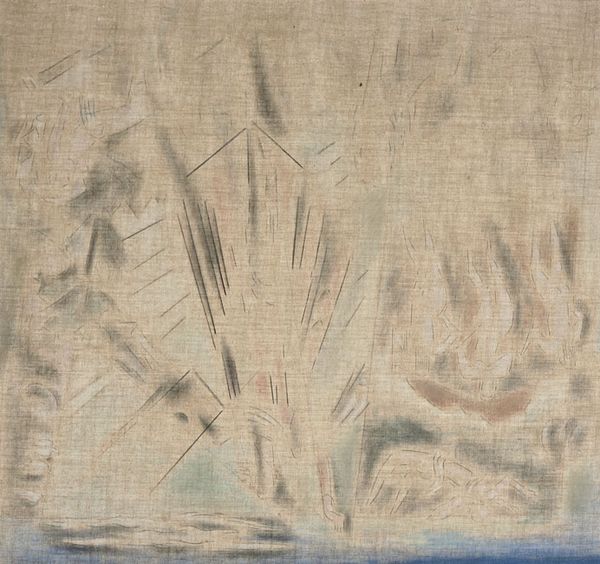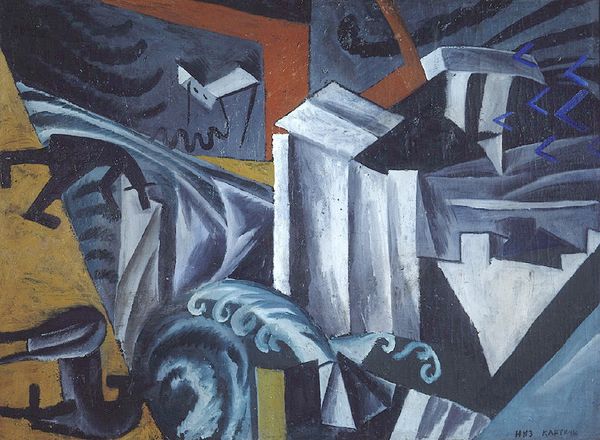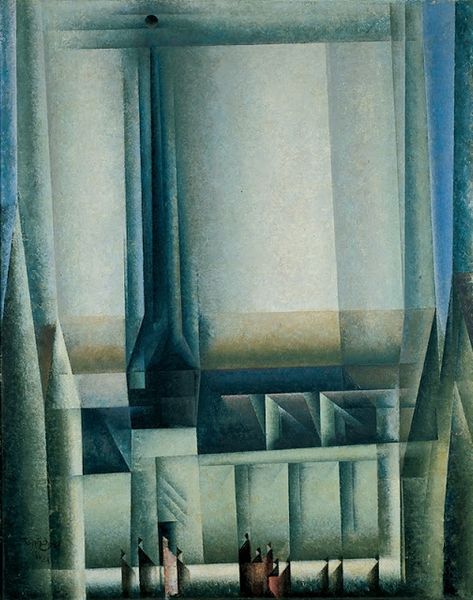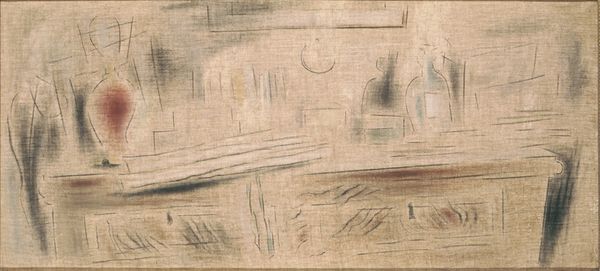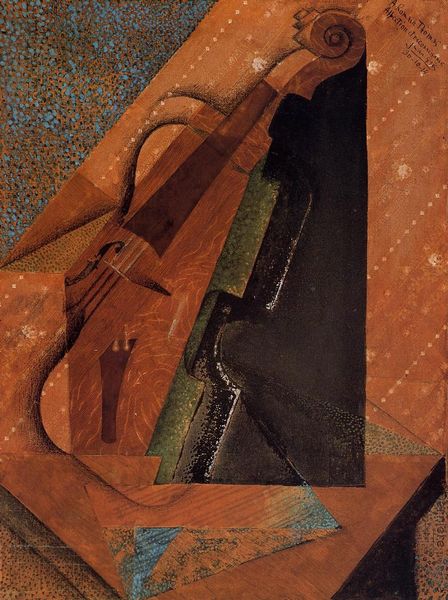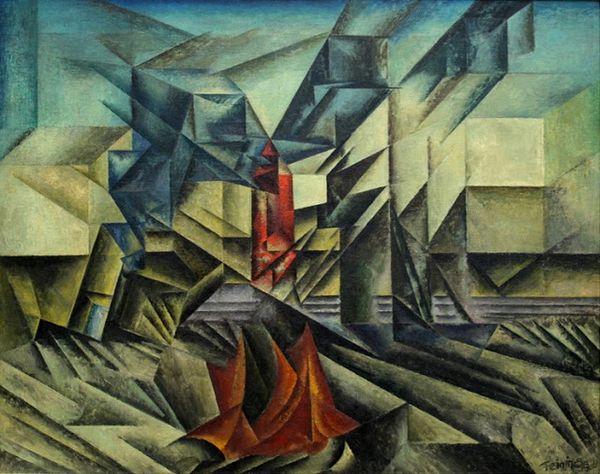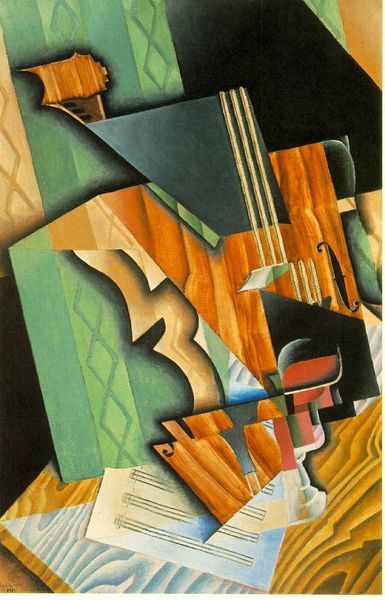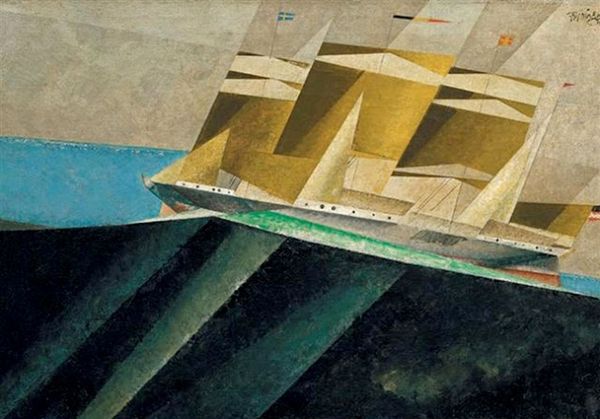
Still Life with Acropolis in the Background 1931
0:00
0:00
konstantinosparthenis
National Art Gallery (Alexandros Soutzos Museum), Athens, Greece
painting, oil-paint
#
painting
#
oil-paint
#
oil painting
#
geometric
#
cityscape
#
modernism
Dimensions: 41 x 81 cm
Copyright: Konstantinos Parthenis,Fair Use
Editor: Konstantinos Parthenis's 1931 oil painting, "Still Life with Acropolis in the Background," at first seems like a simple, muted tableau. The longer I look, however, the more the layers blend and create a kind of ghostlike, dreamscape quality. What do you see in this piece? Curator: I see a powerful intersection of personal and political space, subtly critiquing notions of national identity. The still life, traditionally domestic and intimate, is juxtaposed against the Acropolis, an enduring symbol of Greek heritage and, frankly, a visual shorthand for Western civilization itself. But how are these spaces, these histories, actually lived and experienced? Parthenis seems to be asking that question through the ethereal quality of the forms. Editor: Ethereal is the perfect word! So the ghostly effect…that's a conscious choice? Curator: I think so. Consider the historical moment: Greece in the interwar period, grappling with economic instability and shifting political alliances. This artwork feels less like a celebration of national glory and more like a fragile, perhaps even melancholic, meditation on its meaning. The hazy quality distances us and might even highlight the inaccessibility of the so-called "glory days". Editor: That's really interesting. I had been focused on the visual elements, like the way he layers the interior and exterior spaces, but understanding the context adds another layer. Does Parthenis seem to suggest that the concept of a singular "Greek identity" is itself somewhat fragile? Curator: Precisely! This resonates with contemporary dialogues surrounding identity. We tend to see these cultural signifiers as immutable and unified, but in reality, identity is always constructed, always evolving, and often exclusionary. Editor: So, reading it this way invites us to question who gets to claim ownership of this legacy. I came in thinking it was simply a pretty picture, but I see now it speaks to really complex issues. Curator: Absolutely, and that's the power of art history engaging with critical theory – to challenge assumptions and illuminate hidden narratives. I appreciate you brought up Parthenis today!
Comments
No comments
Be the first to comment and join the conversation on the ultimate creative platform.
